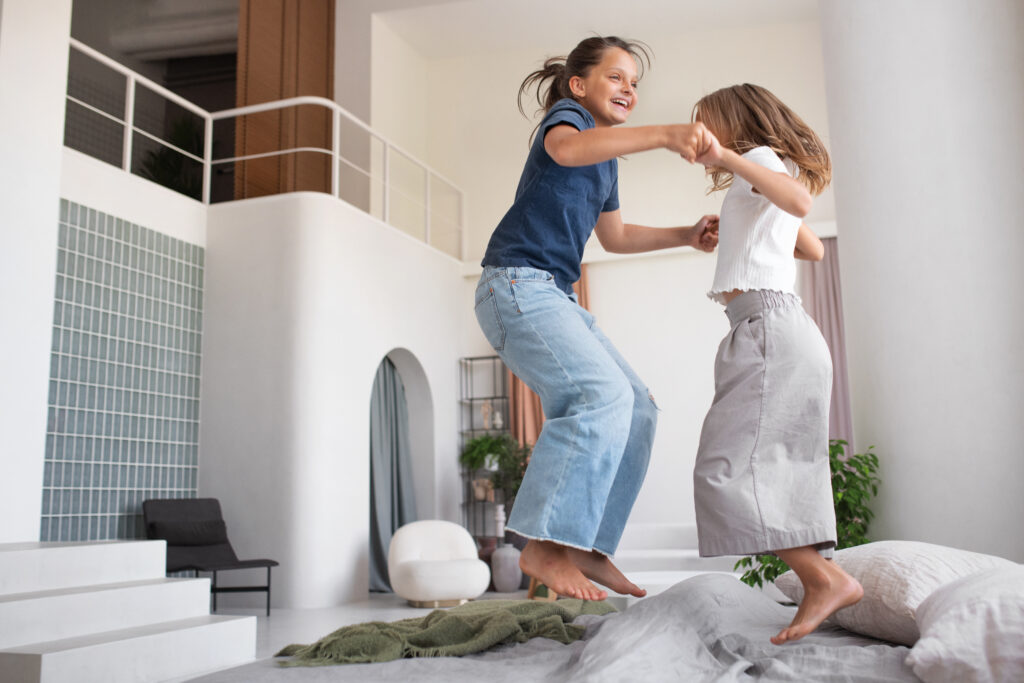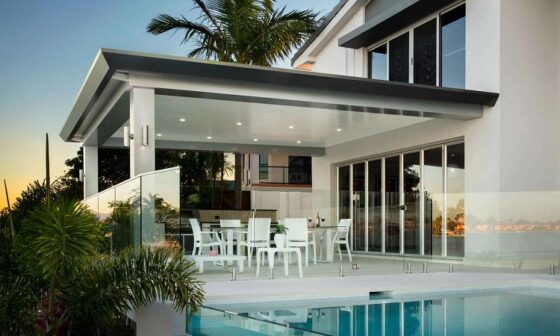When it comes to designing a home that truly supports your child’s growth, it’s not just about creating a pretty playroom or stuffing toys into a corner. Your entire home can be a canvas for creativity, imagination, and development. With some thoughtful planning, you can build a space that encourages learning through movement, exploration, and fun. Whether you’re designing for a toddler taking their first steps or a curious school-aged child, clever home design can make all the difference.

From the moment you start shaping your floorplan, consider how your space will inspire play. Areas for safe climbing, running, bouncing and building aren’t just about burning off energy—they’re essential for physical, emotional and cognitive development. Incorporating elements like a Trampoline in the garden or a Toddler climbing frame in a designated play zone can help support gross motor skills while giving children a healthy outlet for curiosity and adventure.
In this guide, we’ll explore how to make the most of your home’s layout, decor, and outdoor space to create an environment that nurtures your child’s development every day.
1. Start with a Flexible Floorplan
Children grow quickly, and so do their needs. One of the most valuable features in a family home is a flexible floorplan. Open-plan living areas allow for better supervision, interaction, and movement. These spaces can evolve with your child—a play mat area for toddlers today could become a reading nook or homework station tomorrow.
Consider multifunctional furniture and moveable dividers to adjust the layout as needed. By maintaining open sightlines between the kitchen, living, and play areas, you create an inclusive space where children feel involved and safe, and where spontaneous play is always encouraged.
2. Designate Dedicated Play Zones
Every child deserves a space that’s just for them. Whether it’s a corner of the living room, a spare bedroom turned playroom, or even an area in the garden, having a designated play zone fosters independence and creativity. These spaces don’t need to be vast—they just need to be inviting.
Use rugs, shelving, and low furniture to define the space and keep it organised. Wall-mounted storage units, colourful bins, and open shelves make it easier for children to see and choose their toys, promoting decision-making and responsibility. Rotate toys regularly to keep things fresh and stimulating.
3. Embrace Nature with Outdoor Play
Outdoor play is essential for children’s physical development and mental well-being. If you have a garden, consider transforming it into an interactive play haven. Install a trampoline for energy-burning fun and coordination practice. Trampolining also aids balance and spatial awareness—key developmental milestones for growing bodies.
For younger children, a toddler climbing frame is ideal. These small-scale structures provide opportunities for climbing, crawling, and imaginative scenarios. Choose one with slides, ladders, and tunnels to encourage exploration and physical activity. Position the equipment on a soft surface like grass or rubber tiles for safety.
Don’t overlook the value of natural elements. A simple mud kitchen, sandpit, or raised garden bed can provide hours of sensory play. Let your child get messy—they’ll be learning with every squish of mud and scoop of soil.
4. Bring the Outdoors In
When outdoor space is limited, bring elements of nature indoors. Houseplants, natural textures, and daylight can all contribute to a calming and stimulating atmosphere. Choose washable rugs made from natural fibres, and incorporate wooden toys and furnishings to create a warm, organic environment.
Windows and skylights are your best friends. Maximising natural light not only reduces the need for artificial lighting, but also helps regulate your child’s circadian rhythms and mood. Where possible, create cosy reading nooks or play areas by windows to take advantage of the view and sunlight.
5. Prioritise Safety Without Limiting Freedom
Safety is paramount in any child-friendly home. However, overly restricted environments can hinder development. The goal is to create a safe space that still allows freedom to explore.
Install safety gates, cover sharp edges, and secure heavy furniture to walls. At the same time, ensure children can access age-appropriate toys, books, and play zones independently. Choose furniture with rounded edges and use non-toxic paint and finishes throughout your home.
In shared spaces, designate child-safe drawers or cabinets that your child can use freely. Encouraging this autonomy supports confidence and motor skill development.
6. Create Multi-Sensory Play Areas
Children learn best through sensory experiences. Design areas in your home that engage multiple senses—touch, sight, sound, smell, and even taste (when safe). Soft rugs, textured walls, musical toys, and scented playdough all help stimulate the senses and support cognitive development.
A sensory wall can be a great addition to a hallway or playroom, featuring mirrors, Velcro, fabric patches, bells, and zippers. For quieter moments, a cosy den with dim lighting, plush cushions, and calming sounds can be the perfect retreat.
7. Incorporate Learning Through Play
Learning and play go hand in hand. Integrate educational elements into your home design to encourage curiosity and discovery. Maps, alphabet art, chalkboard walls, and number games can all be part of the decor.
In the kitchen, create a child-safe baking area where kids can help mix, measure, and learn about healthy eating. In the bathroom, use visual cues to support routines, such as brushing teeth or washing hands.
Incorporate bookshelves at child height in multiple rooms, and offer a rotating selection of books to keep reading fresh and engaging. A comfortable chair or beanbag will make reading time even more appealing.
8. Keep It Organised with Kid-Friendly Storage
Organisation might not sound exciting, but it plays a big role in promoting responsibility and independence. Child-friendly storage solutions help children learn how to tidy up after themselves and make their own choices about what to play with.
Opt for open baskets, clear bins, and picture labels to make it easier for toddlers and young children to understand where things go. In shared family areas, stylish storage units that blend in with your decor can keep the space looking tidy while remaining functional.
9. Make Room for Creativity
A well-designed home should nurture creativity. Set up an art station with washable supplies, a display wall for your child’s creations, and easy access to crayons, paints, and paper. Encourage free expression by keeping this area informal and judgment-free.
Similarly, a dress-up box or a puppet theatre corner can foster imaginative role play, helping your child build confidence, empathy, and communication skills.
10. Involve Your Child in the Design Process
Whenever possible, let your child have a say in how their space is designed. This doesn’t mean handing over the reins completely, but involving them in choosing colours, decorations, or even where their toy shelf goes can foster a sense of ownership and pride.
Ask them what themes they like, what makes them feel happy or calm, and what their dream room looks like. You might be surprised at the thoughtful answers!
Final Thoughts
Designing a home that supports your child’s play and development doesn’t require grand renovations or endless toys. With thoughtful planning and a few creative choices, you can build an environment that nurtures learning, sparks imagination, and adapts as your child grows. From a safe and stimulating indoor layout to outdoor adventures with a trampoline or a toddler climbing frame, your home can be both a sanctuary and a springboard for development—all while staying beautifully liveable for the whole family.


